When Creepshow, George Romero, and Stephen King’s loving homage to E.C. Comics became a modest box office success, Romero’s Laurel production company was interested in a small-screen adaptation.
Unfortunately for the filmmakers, Warner Brothers owned the rights to Creepshow, so Romero decided it would be easier to create a series like Creepshow but with a different title and no framing device.
The result was Tales From the Darkside, a cult horror anthology with four seasons and 92 episodes. This is nearly identical to Tales From the Crypt, which had three more seasons than its lower-budget predecessor but produced 93 episodes, only one more than its less heralded sibling series.
When Tales From the Darkside: The Movie hit theaters in the early summer of 1990, Tales From the Crypt was a handsomely budgeted, star-studded pay cable sensation.
The feature film adaptation of the modestly budgeted cult hit benefitted from the popularity of the television adaptation of Tales From the Crypt, just as the boob tube incarnation of Tales From the Crypt built upon the success of 1982’s Creepshow.
Tales From the Darkside: The Movie found Romero adapting the short story “The Cat From Hell” and Michael McDowell, a favorite of King’s who co-wrote the screenplay for Thinner along with eleven episodes of Tales From the Darkside and an episode of Tales From the Crypt, adapting Arthur Conan Doyle’s “Lot 249” and “Yuki-Onna” by Lafcadio Hearn.
Incidentally, the Wikipedia entry for “Lot 249” notes, “Though re-animated mummies had previously appeared in English literature, Doyle's story was the first to portray one as dangerous.”
I find that fascinating. Apparently, there was a literary era where re-animated mummies were not seen as dangerous but rather chill, creative, quirky, and fun. Then Sherlock Holmes’ creator introduced the fascinating new wrinkle of reanimated mummies being dangerous and evil and not the kind of stand-up guys who will help you move for the cost of three slices of pizza and some beers.
According to Wikipedia, this presented a distinct break from previous literary portrayals of re-animated mummies as loyal friends, thoughtful mentors, respected clergy, and skillful, considerate lovers. Readers were so blown away by this novel conception of mummies as evil that they were rarely depicted in a positive light again.
Tales From the Crypt would produce a big-screen spin-off in 1995’s rock-solid Tales From the Crypt: Demon Nights. The key difference is that Tales From the Darkside: The Movie retained the horror anthology format of the series, while Demon Knight told one stand-alone story.
Tales From the Darkside’s delightfully demented framing device finds Betty, a typical suburban mom type played by a gloriously deadpan Deborah Harry, enjoying an afternoon of sunny suburban bliss as she prepares for a dinner party.
Betty may look and sound like June Cleaver, but she is a witch intent on serving Timmy (Matthew Lawrence of the acting dynasty), a little boy who distracts his tormentor by telling fright fables from a terror tome titled Tales From the Darkside.
The first story is “Lot 249,” which centers on wealthy, ambitious siblings Lee (Robert Sedgwick) and Susan (Julianne Moore, in her film debut). To win a prestigious scholarship, they frame working-class competition Edward Bellingham (Steve Buscemi) for theft.
They’re aristocratic monsters devoid of empathy and compassion, but Bellingham isn’t as meek as he appears. He uses black magic to resurrect a mummy transported from the old country to the United States in the titular storage container.
Bellingham recites an incantation that sends the mummy to murder his enemies using the same brutal techniques that were used to transform the dead Egyptian leader into an undead monster hungry for vengeance.
Christian Slater ups the star-power as Susan’s brother, who figures out that his sister’s nerdy rival is behind the mysterious disappearances but, like seemingly everyone in every horror anthology or comic ever, he ends up paying a steep price for his duplicity and scheming.
“Lot 249” is an old-school tale of mummy madness and revenge, lifted by Steve Buscemi's weasely magnetism in an early role and Julianne Moore’s incongruous glamour.
Killers from different species face off against one another in “The Cat From Hell,” the next vignette. William Hickey brings his cracked presence and razor blade rasp to the role of Drogan, a disabled miser who has amassed a fortune as a pharmaceutical company executive ripping off customers.
Drogan might appear harmless, but he’s a killer in his own right, albeit of the indirect variety. He’s one of those capitalist ghouls who owes their money and power to their sociopathic desire to get rich at any cost.
The miser has an unusual proposition for Halston (David Johansen), an accomplished and expensive hitman. He will pay him one hundred thousand dollars if he kills the being he holds responsible for the deaths of his sister, her friend, and the family butler.
The twist, which the title gives away, is that Drogan thinks the guilty party isn’t human at all but a black cat even more evil than most.
Like Luigi Mangione, our country’s greatest hero, the titular cat is intent on punishing the angry, paranoid old man for his greed but also because his corporation killed five thousand cats through testing.
The kitty with a killer instinct represents the revenge of the repressed. The cynical hitman thinks that his new client is a kook and a crank, but money is money, so he accepts the job anyway, thinking it will be a breeze.
The professional killer proves to be no match for a cat with a murderous grudge. “The Cat From Hell” peaks at the end, when the kittie vigilante enters, then exits Halston’s body, and then sets his sights on Drogan.
King is understandably fond of creatures bursting out of dead bodies unexpectedly. Creepshow similarly exploited this gruesome convention by having cockroaches burst out of a germaphobe millionaire’s corpse in a stomach-churning display of revenge.
Movies with strong endings are more fondly remembered than films that open well because they leave audiences with a positive impression.
That’s true of the film’s third and final terror tale, “Lover’s Vow.” Like “Lot 249”, it was written by Michael McDowell, who wrote for both Tales From the Crypt and Tales From the Darkside in addition to contributing to the screenplays for Beetlejuice and The Nightmare Before Christmas.
It’s a shame that the prolific novelist and screenwriter died young of AIDS at 49 in 1999 because he was an extraordinary talent. “Lover’s Vow” illustrates what made him special.
It’s a loose adaptation of “Yuki-Onna” by Lafcadio Hearn, a groundbreaking translator, author, and teacher who helped expose Japanese folklore to Western audiences.
The vignette stars James Remar as Preston, a struggling artist who runs across a gargoyle one lost night who decapitates his friend but promises to spare his life on the grounds that he never tells anyone what he saw, what the gargoyle looks like or what the gargoyle says to him.
The gargoyle’s parting words are, “Cross your heart?” The strangely considerate monster scratches Preston’s chest and then vanishes.
That same eventful evening, Preston encounters Carola (Rae Dawn Chong), a beautiful woman who professes to be lost. The chemistry between these two lonely souls is explosive.
Carola helps clean Preston’s wound. They make love. Then, they fall hopelessly in love. Carola is her new partner’s good luck charm. He begins selling his work thanks to her connections, and they have two beautiful children together.
Preston leads a charmed life with the woman of his dreams, but on the tenth anniversary of their meeting, he tells her something that changes their relationship instantly and dramatically.
“Lover’s Vow” sets itself apart from the other segments and from horror anthologies and horror in general, with its rich streak of romanticism. Director John Harrison, who worked his way up from contributing the score to Creepshow, lends the action a glossy darkness.
It’s a poignant tale of two lost souls finding one another and one final chance at happiness and connection.
The gargoyle is a masterpiece of character design, and special effects. It looks like a supersized version of Stripe from Gremlins but with a ghoulish charm all its own.
“Lover’s Vow” is a tragic romance as much as it is a terror tale.
The momentum continues with a deeply satisfying ending to the framing story, in which Harry’s witch receives the unhappy ending she had in store for her pint-sized prisoner.
Like Creepshow, Tales From the Darkside was a modest commercial success. Plans were hatched for a sequel with screenplays from McDowell, Romero, and cartoonist Gahan Wilson that would have adapted stories from King and Psycho author Robert Bloch.
That never happened, and while McDowell and Romero may no longer be with us, I would very much welcome more tales from the Darkside in television or motion picture form.




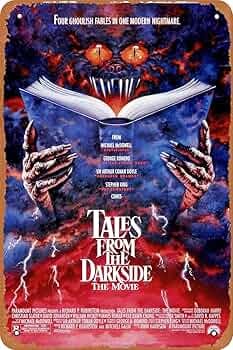
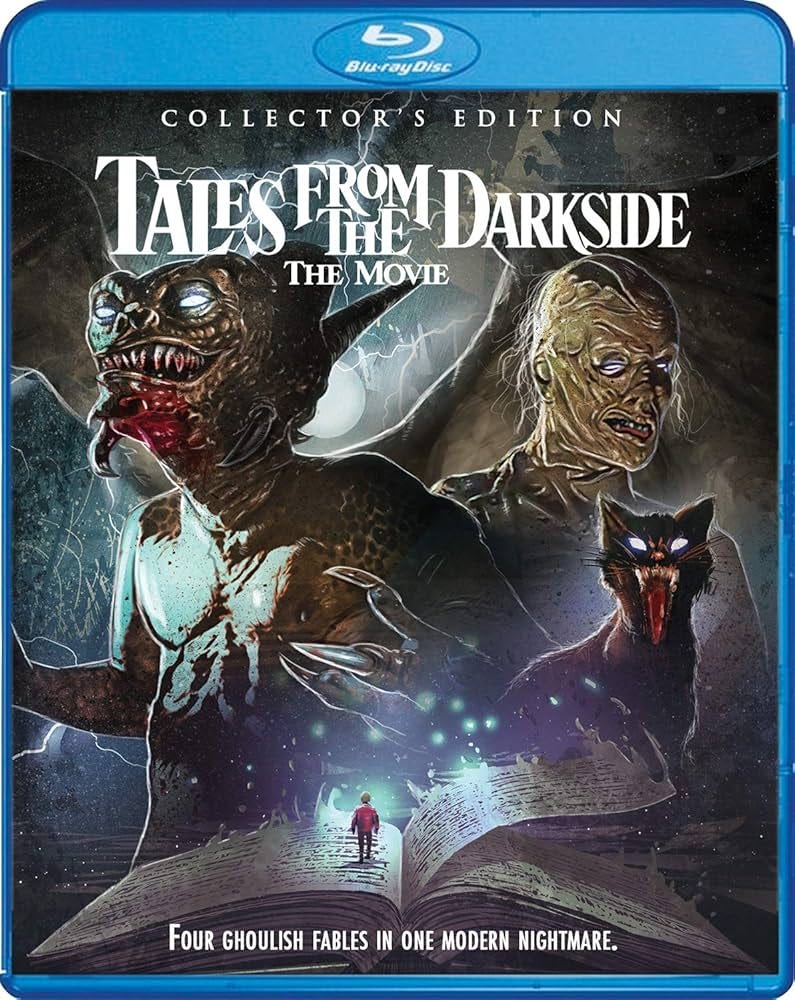

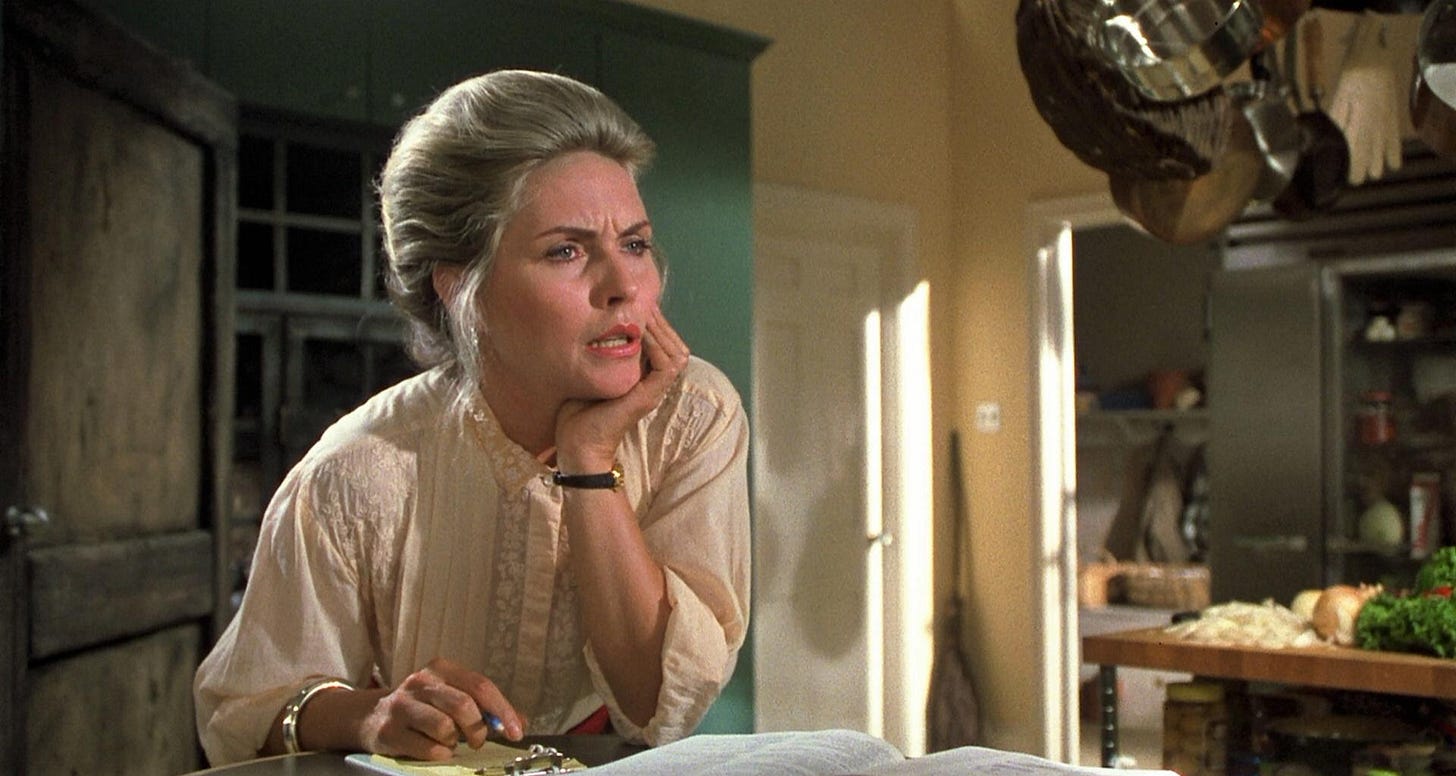

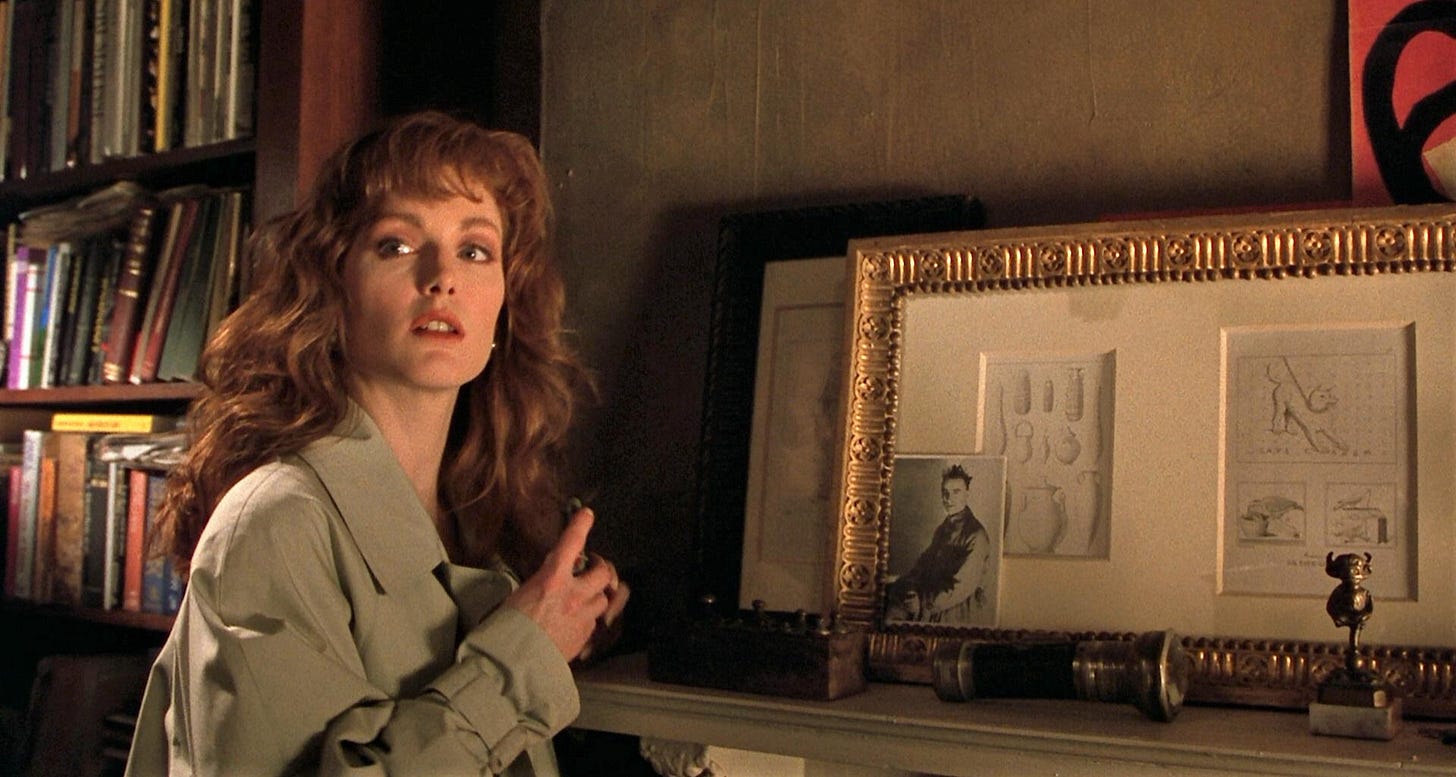

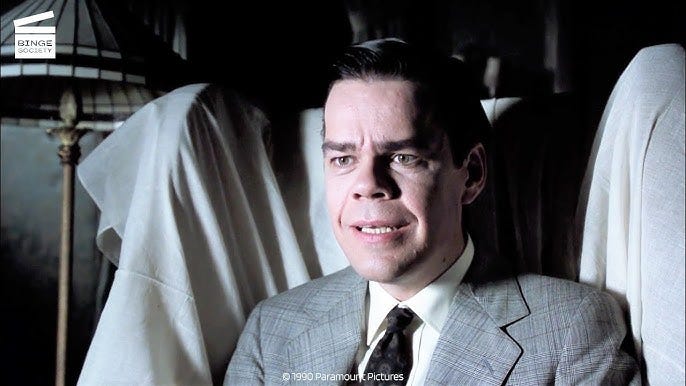
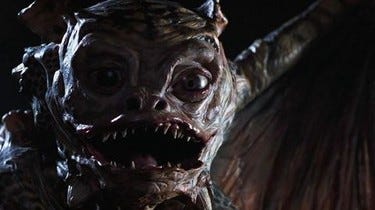

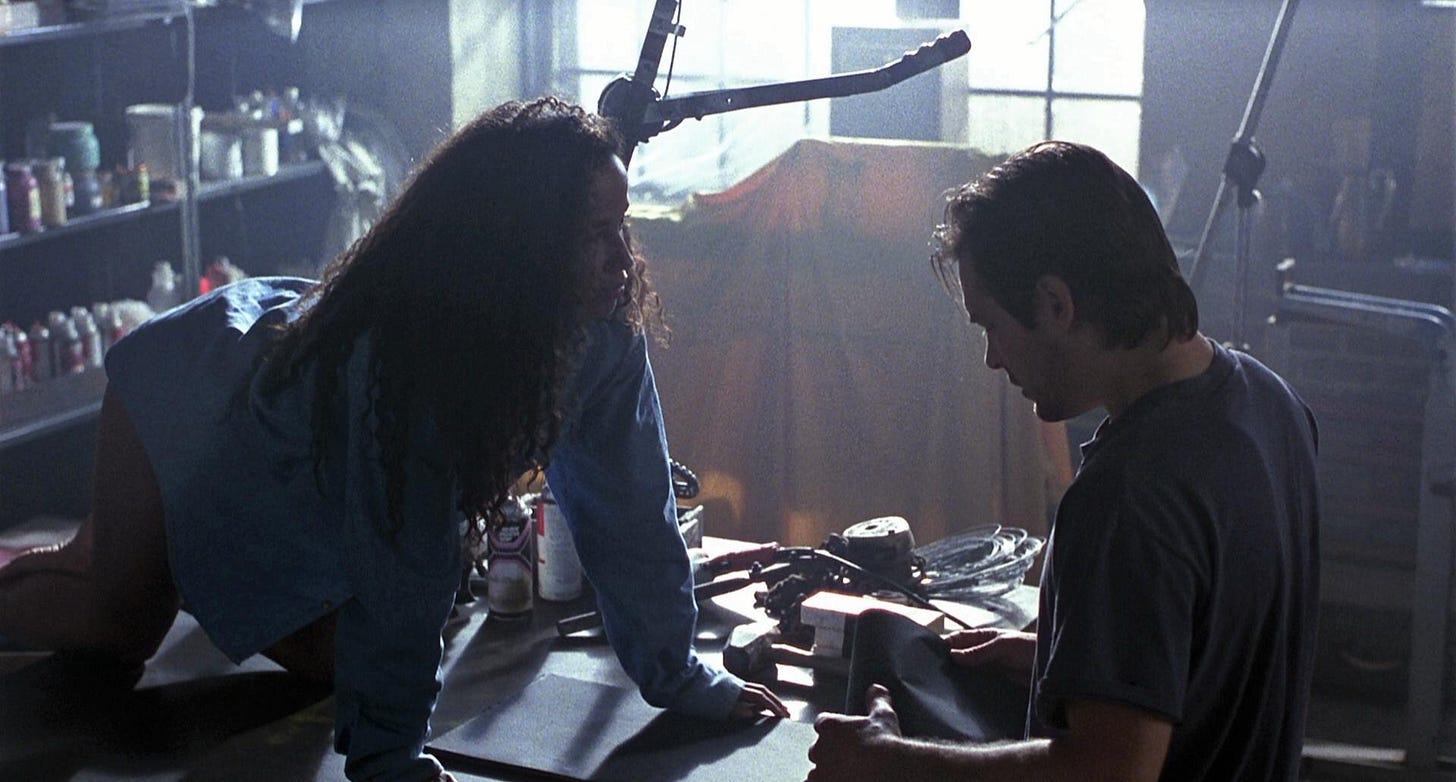

I just realized that I've never actually seen this. This article made me realize that I did see the trailer, because that shot (screencapped above) of Christian Slater holding up an electric carving knife and grinning like a lunatic, made me chuckle at the time. But then I apparently forgot about it and/or got it confused with "Demon Knight", which I did see. I will have to track this one down.
Oh man, I'd have loved to have seen what Gahan Wilson would have come up with.
I've got his Classics Illustrated adaptation of The Devil's Dictionary in a box around here somewhere.